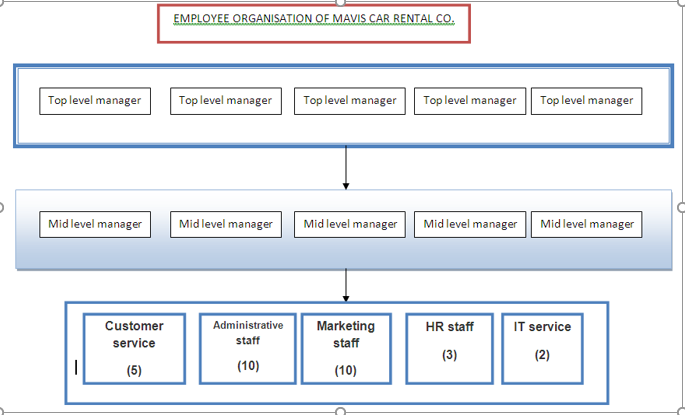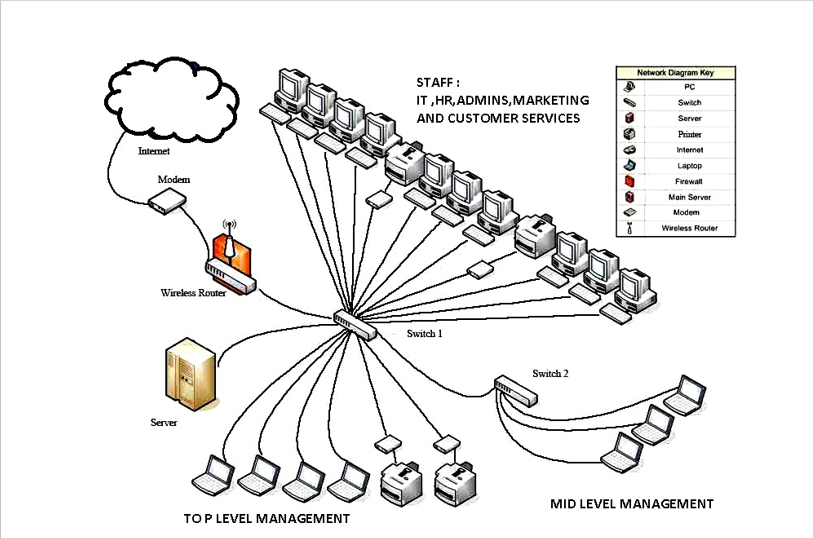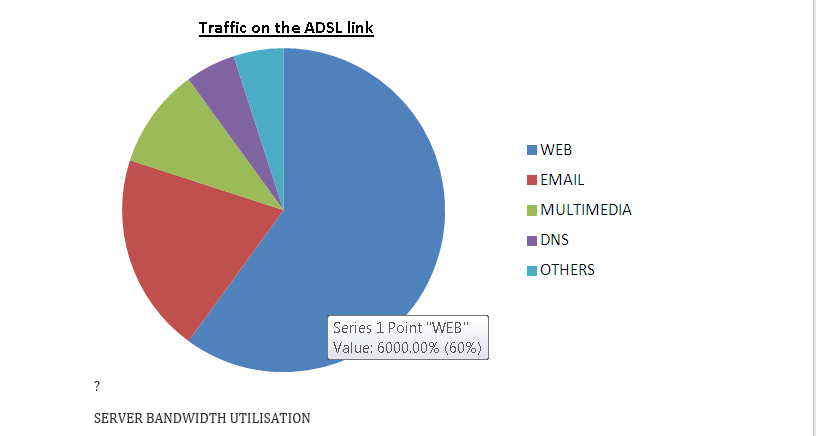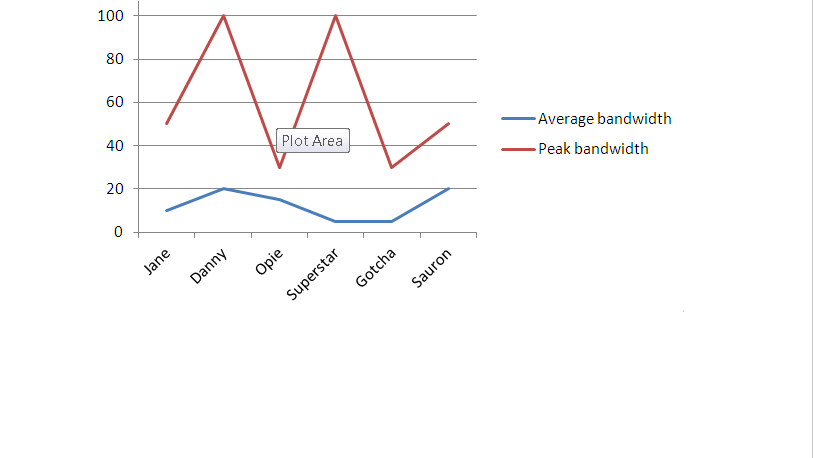Question
the document (report) what i have submited, and the feedback is below and i need to fix it as feedback. The following shows the organizational
the document (report) what i have submited, and the feedback is below and i need to fix it as feedback.
The following shows the organizational chart in the head office of the client

A basic requirement of a good network design is to discuss the clients networking needs, because it enables a network analyst to analyses the various issues the network needs to address(eg. How many number of clients systems are needed to be setup and what is the deadline of the project etc.,).
For this it is need to arrange a lot of meetings with the client. Initially the meetings focus on managerial type issues like the budget of the project and basic functionalities that a network can offer , but after acquiring more and more information about the clients needs ,we can arrange meetings to discuss specific issues which gather requirement specific information in detail.
The network analysis should start the analysis process by asking the client some questions about the desired functionality of the network, such as:
What tasks would the client like to automate or make more efficient?
What business applications does the client need to support?
Does the client have an existing network, and what is its function?
What are the enhancements needed for the existing network?
Is there a necessity for additional software applications to be integrated with the network services?
Does the client needs a dedicated web server to host the company information on the web?
Does the client simply want to have shared access to word processing files, or do they have multi-user databases to support?
Does the client need a VoIP functionality?
Does the client have servers? If so, does the servers handle the increase in the load?
Does the client require electronic mail and Internet, perhaps even a web server?
What is the estimated size of the network; how many users will the network service?
How important is network security?
Does the employees need a work at home facility?
Does they need a VPN based access?
Is there a need for online data backup and recovery?
Does the client use cloud computing oriented applications?
After considering all the tasks and functions the client needs, prioritize each requirement and create the plan by considering which requirements can be achieved first and which could be done later by taking care of critical business requirements first.
The following are the issues that should be considered for creating a network plan:
scalability
A good network should be designed to grow easily with the careful addition of existing technology.
standards
Use current network operations and use these as your standard so that there no compatibility issues woth newly added network equipment and devices.
connectivity
it concerns about what level of Internet access the client will require ?
interoperability
This refers to the hardwares ability to communicate and interact with different hardware and operating systems.
When recommending new hardware you need to consider what type of hardware is already in use and make sure that the new component is compatible.
security
There are a lot of hardware solutions that can be implemented to improve security of the network.
For example Using routers with built-in firewalls Using a switch to partition a network from public

ease of use
The hardware needs to be easy to use, especially for the end user.
software compatibility
You need to know what software the client needs to run, at present and in the near future.
maintainability
the equipment installed needed to be verified that they are from a trusted manufacturer and should have a low maintenance and operating costs with high durability and reliability
cost effectiveness
As an IT professional advising a client on network hardware it is your responsibility to ensure that the hardware you recommend offers the best value for money possible.
OBTAINING BUSINESS SPECIFICATIONS FROM THE EMPLOYEES
top-level managers and executive officers:
require statistics of the business operations of the company over a period of time
mid-level managers
require information such as procurement of cars, service to customers such as e-mail conversations and issuing bills etc.
reporting the data to top level management
customer service people
require communication with the customer
gathering information regarding legal procedures and other operational information of the customer like personal details and insurance
administrative staff
deal with taking print outs of the reports and issuing bills
communication with mid-level and top level managers
marketing staff
deal with customer communication and convey information to customers
HR STAFF
deal with all the staff information
IT Support staff
monitor the systems and track the network and system issues
Technical requirements:
Initial set up of office
Is there existing cabling for phones and computers?
Any additional cabling required?
Extra outlets to take advantage of any expansion in your organization?
Floor plan for layout of office equipment?
Ethernet Cabling
the network needs a sufficient number of Ethernet cables to connect all devices in your network. Most modern networks use Category 5 or 6 cables
Modem
A modem exists at the edge of your network and provides bidirectional communication between your ISP and the devices inside your network.
Routers and Switches
A router or switch connects to your modem via an Ethernet cable and provides connectivity to multiple devices. Unlike switches, routers enable you to connect two networks together.
Patch Panels
Ethernet cabling runs from wall-mounted Ethernet jacks to a patch panel in a server room or wiring closet. Individually numbered for best results, a patch panel contains a single Ethernet jack for each termination
Hardware requirements for staff
Is network configuration for the systems required?
Number of workstations computers required for staff
What peripherals are required?
Is a wireless setup preferable in your environment?
Will any of the staff require mobile technology?
Software
Operating System software for systems
What application software will be required for business operations ?
Email Considerations
Set up of Email addresses and security profiles for Staff?

SERVER BANDWIDTH UTILISATION
| Server | Average bandwidth | Peak bandwidth | |
|---|---|---|---|
| Jane | 10Mbps | 50 Mbps | |
| Danny | 20 Mbps | 100 Mbps (limit of NIC) | |
| Opie | 15 Mbps | 30 Mbps | |
| Superstar | 5 Mbps | 100 Mbps (limit of NIC) | |
| Gotcha | 5 Mbps | 30 Mbps | |
| Sauron | 20 Mbps | 50 Mbps
| |
feedback
Assessor Feedback:
Start the Report (after the Header page), with a Table of Contents, page numbering etc.
Use headings, sub-headings appropriately (fonts, upper-case, lower-case)
Include a screen capture from the Packet Tracer as the logical design, within the Report
Use the Physical section from the Packet Tracer to get the physical design and include within the Report
Include a breakdown of the cost (with item details, cost) in a table format
Include a Conclusion (final design document) and a References page.
You could use the Tasks and items within tasks as Headings and Sub-Headings
Assessment criteria / benchmarks The evidence submitted demonstrates that the student satisfactorily: Attempt 1 S= satsfactory U=unsatsfactory S U 1. Interview questions for a key stakeholder to obtain business requirements.S
2. Assessed the business requirements of the organisation.S
3. Developed a preliminary network design to meet the business requirements, with suitable hardware, software and network elements, meeting the goals of network design. U
4. Outlined the features of the design and explained how the business requirements are met by the design.S
5. Predicted the performance of the network design based on an analysis of the existing network baseline. S
6. Determined the cost of the network design: equipment, cabling,support and training requirements. U
7. Wrote a final network design document in a suitable format with appropriate sections for delivery to the client. U
thank you
TI Top level manager Top level managerTop level managerTop le vel managerTop level manager Mid level manager Mid level managerMidlevel managerMid level managerMidlevel manager Customer service HR staff Administrative Marketing IT service staff staff (10) (10) TI Top level manager Top level managerTop level managerTop le vel managerTop level manager Mid level manager Mid level managerMidlevel managerMid level managerMidlevel manager Customer service HR staff Administrative Marketing IT service staff staffStep by Step Solution
There are 3 Steps involved in it
Step: 1

Get Instant Access to Expert-Tailored Solutions
See step-by-step solutions with expert insights and AI powered tools for academic success
Step: 2

Step: 3

Ace Your Homework with AI
Get the answers you need in no time with our AI-driven, step-by-step assistance
Get Started



